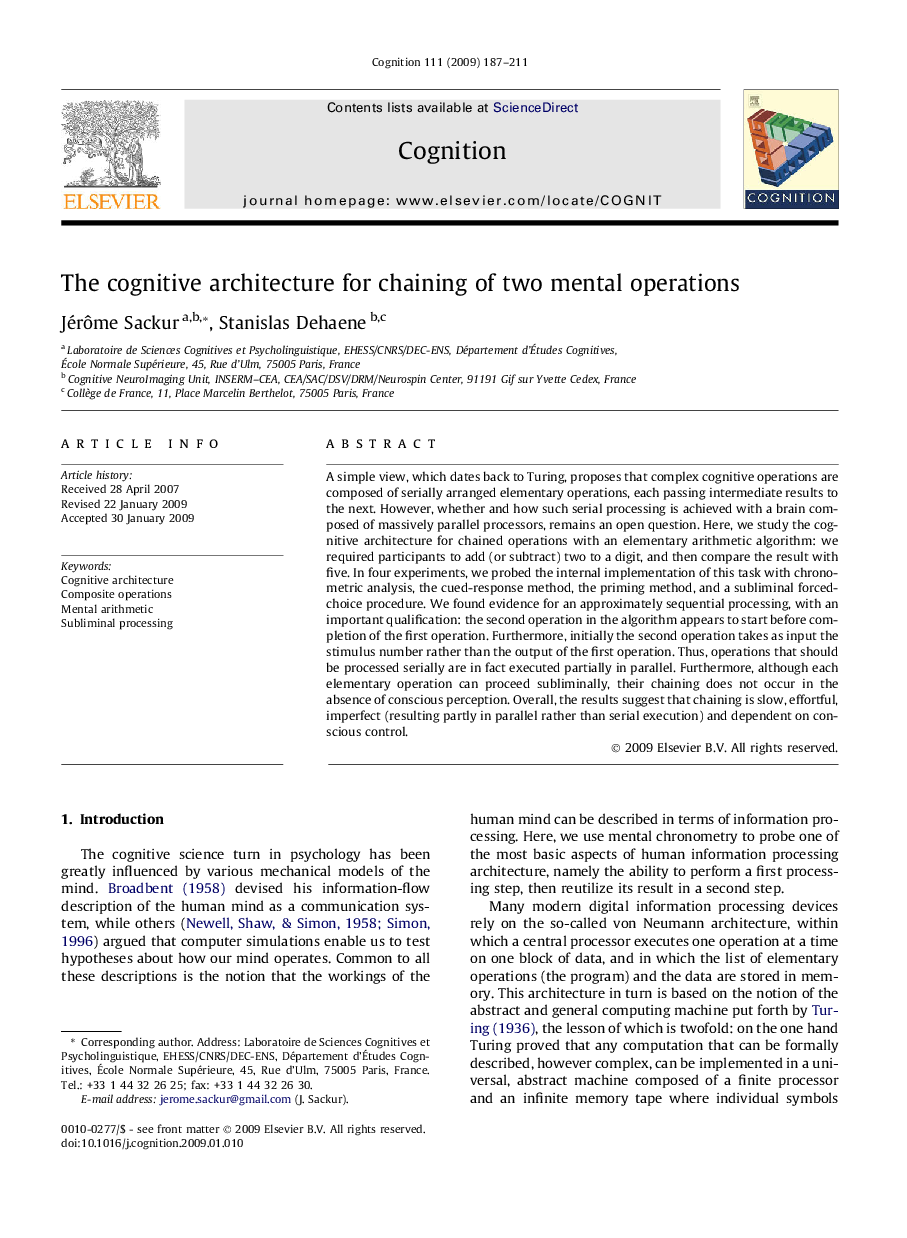| کد مقاله | کد نشریه | سال انتشار | مقاله انگلیسی | نسخه تمام متن |
|---|---|---|---|---|
| 927281 | 921961 | 2009 | 25 صفحه PDF | دانلود رایگان |

A simple view, which dates back to Turing, proposes that complex cognitive operations are composed of serially arranged elementary operations, each passing intermediate results to the next. However, whether and how such serial processing is achieved with a brain composed of massively parallel processors, remains an open question. Here, we study the cognitive architecture for chained operations with an elementary arithmetic algorithm: we required participants to add (or subtract) two to a digit, and then compare the result with five. In four experiments, we probed the internal implementation of this task with chronometric analysis, the cued-response method, the priming method, and a subliminal forced-choice procedure. We found evidence for an approximately sequential processing, with an important qualification: the second operation in the algorithm appears to start before completion of the first operation. Furthermore, initially the second operation takes as input the stimulus number rather than the output of the first operation. Thus, operations that should be processed serially are in fact executed partially in parallel. Furthermore, although each elementary operation can proceed subliminally, their chaining does not occur in the absence of conscious perception. Overall, the results suggest that chaining is slow, effortful, imperfect (resulting partly in parallel rather than serial execution) and dependent on conscious control.
Journal: Cognition - Volume 111, Issue 2, May 2009, Pages 187–211